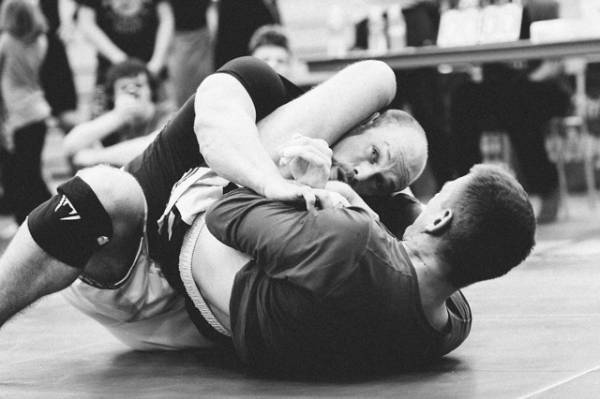Grapplers are some of the hardest working athletes around. Some train multiple times a day, work full time, or are in school. Few grapplers are professionals – they don’t get paid to compete and train.
Grapplers are passionate about their sport. This passion that drives them to train also drives them into the ground with injuries and metabolic damage. The purpose of training is to get better. When your body is beat down, training will make you worse. When you do any type of physical activity, your body responds with an adaptation. Your body’s adaptive response occurs when you are at rest. Without adequate rest your body will not adapt properly causing physical and mental consequences.
The question then becomes: how much training does a grappler need?
Who Are You?
Are you a competitor or a recreational athlete? First, we should define the two terms. For the purpose of this article a competitor is anyone who hopes to make a name in Brazilian jiu jitsu. A competitor is someone who trains and competes full time. Everyone else is a recreational athlete. A recreational athlete might jump into a competition to test his or her skills, but the focus is training for fun, stress relief, or simply love of the sport.
Competitor
A competitor’s focus is on BJJ training. Hard training sessions are unavoidable. Most competitors feel the need to train multiple times a day. To avoid burnout of the central nervous system and reduce inflammation, their training and recovery strategies have little room for error.
Some tips to help the competitor:
- Hard training sessions must be followed with rest or a light session. For example, train hard Saturday morning, but take Sunday off.
- I would not recommend two hard training sessions on the same day. For competitors who train twice a day, if one session is going to be intense, then the other session should be recovery work or light drilling.
- Remember you do not have to train hard everyday all day. Mix in some easy and medium intensity days.
- Do not spar hard everyday. The majority of training time should be spent drilling.
- One or two sessions of strength and conditioning work per week is all you need. Avoid doing your intense strength and conditioning sessions on the same day as intense BJJ training.
- The rest of your training time should focus on recovery work.
Recreational Athlete
The focus of a recreational athlete is skill work and drilling. If this is you, spend the majority of your time improving skills. Then, throw in a hard training session no more than two days a week. Next, add in some strength work. Not conditioning! Recreational athletes get more than enough cardiovascular activity from training. Focus on building strength. Most importantly, spend time each day helping your body recover. Recovery work includes everything from nutrition to sleep.

Listening to Your Body
Competitors and recreational athletes can learn a lot from their bodies if they just listened. Despite the repeated efforts of the body screaming to take a break and slow down, we rarely listen. That is, until an injury or illness happens and we are forced to slow down.
Pay attention to the following signals:
- Mood changes: When the body is getting to the point of overtraining, changes in mood are common. You may feel depressed or just down.Joint pain and stiffness: Too much training causes inflammation.
- Performance: Keep track of your performance. If there is a drop, instead of an increase in training, it may be time to take a day or two off.
Conclusion
For grapplers to get better, hard work is important. But rest and recovery are just as important. Look at your training volume and intensity and make adjustments based upon performance and mood. We all know the difference between being lazy and being overtrained. There is nothing wrong with taking a day off when it is needed. In the long run, it will help you more than if you trained that day.
Photos provided by David Brown Photography.






